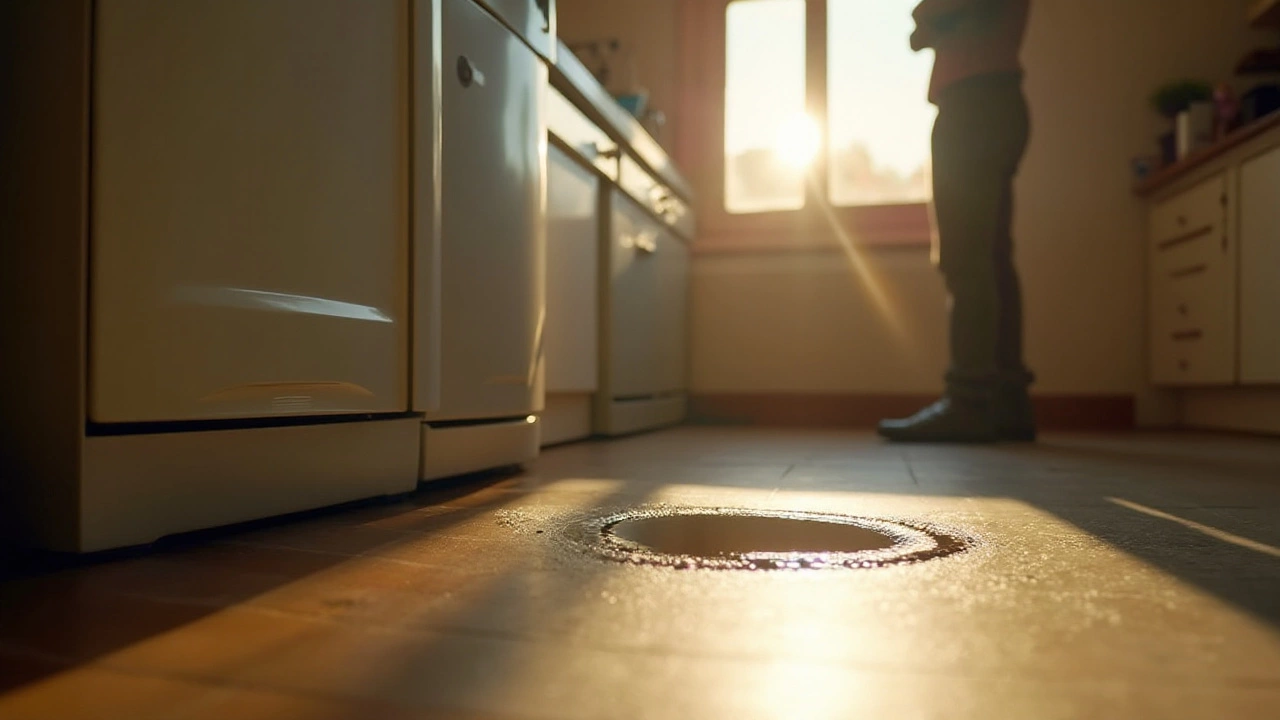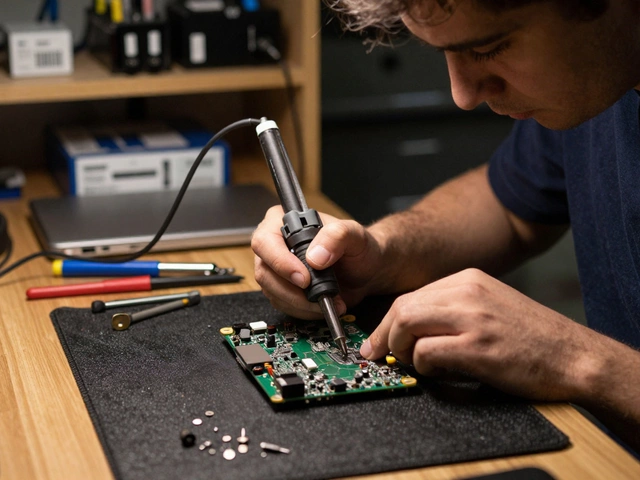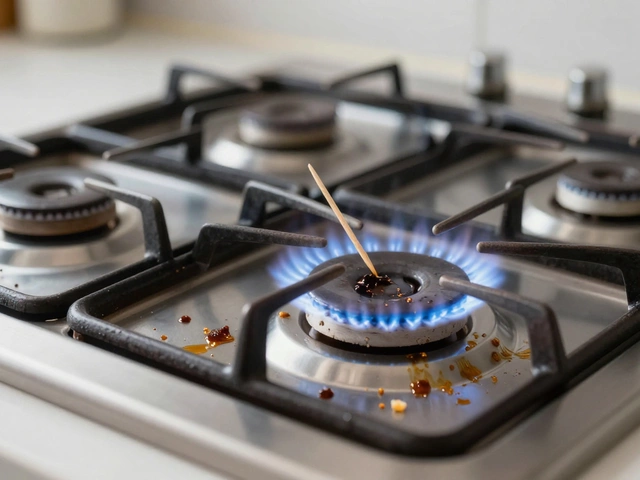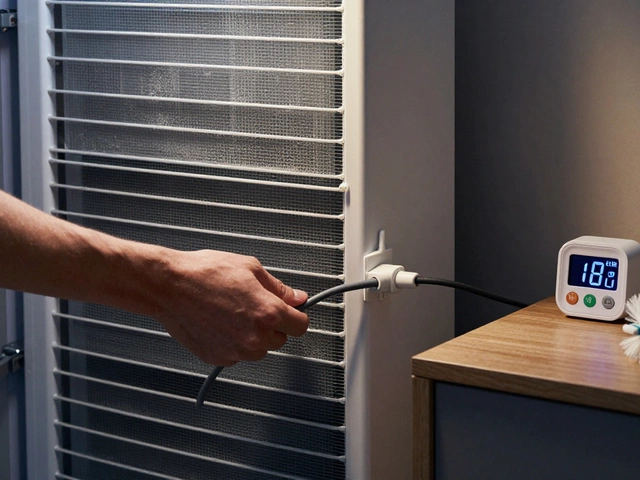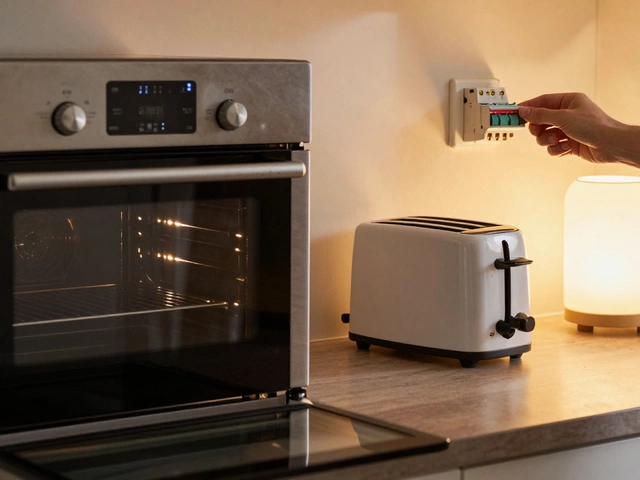When your water heater starts leaking, it often feels like a race against time to prevent further damage. But knowing where leaks commonly occur can give you a head start in managing the situation. In this guide, we'll explore the usual suspects – the places where water heaters most frequently develop leaks.
Whether you're a seasoned DIY enthusiast or just starting to learn your way around plumbing, understanding these problem areas can be beneficial. From rusty tanks to faulty valves, each part of your water heating system plays a role in maintaining a leak-free environment. Let’s dive into the details and set the stage for a deeper understanding of your water heater's vulnerable spots.
- Understanding Water Heater Components
- Common Leak Points in Water Heaters
- DIY Inspection and Early Detection Tips
- When to Call a Professional Plumber
Understanding Water Heater Components
Water heaters are essential appliances that are often taken for granted until they malfunction. At the heart of every water heater is a set of components working in harmony to provide you with a steady stream of hot water. Understanding these parts can not only demystify how your heater operates but also help you diagnose problems such as water heater leaks. Starting with the outer layer, most units are encased in a metal casing which serves as the first line of defense against the elements. Inside, a layer of insulation keeps the heat in, ensuring energy efficiency while reducing standby heat loss.
At the core lies the water tank, typically made of steel and lined with glass or a similar material to prevent rust and corrosion. This tank is where your water is heated and stored. Heaters are equipped with either a gas burner or electric heating elements to raise the water temperature to your desired setting. A thermostat acts as the brain, telling the heater when to turn on or off based on your preferences. A complementary part to this is the dip tube, which directs incoming cold water to the bottom of the tank, ensuring a consistent hot water supply out of the top through the hot water outlet.
The pressure relief valve, or T&P valve, is a critical safety component designed to release pressure if it becomes too high inside the tank. This valve is a common point for leaks, particularly if it becomes faulty or compromised. Another notable feature is the drain valve located at the base of the tank. While its primary purpose is to facilitate easy draining for maintenance, it sometimes serves as an exit point for leaks if not properly sealed. A key note by the Department of Energy suggests regular maintenance of these components can significantly prolong the lifespan of your water heater, reducing the risk of unexpected leaks and costly repairs.
"Regular inspection and scheduled maintenance are key to sustaining a water heater's efficiency and performance," states the Department of Energy.
For those new to home maintenance, getting acquainted with these components can be daunting, but it is vitally important for troubleshooting. The more familiar you are with where each part is and how it functions, the easier it will be to identify where a problem might be brewing, especially related to potential leaks. A handy trick is to keep an eye and ear out for any changes such as unusual sounds or visible leaks. Speak to your plumber and take note of the parts they handle during routine checkups; this can make future DIY inspections more efficient and less intimidating. Ultimately, knowing how these components work together builds confidence and allows for proactive measures, ensuring your water heater runs smoothly, safely, and efficiently.
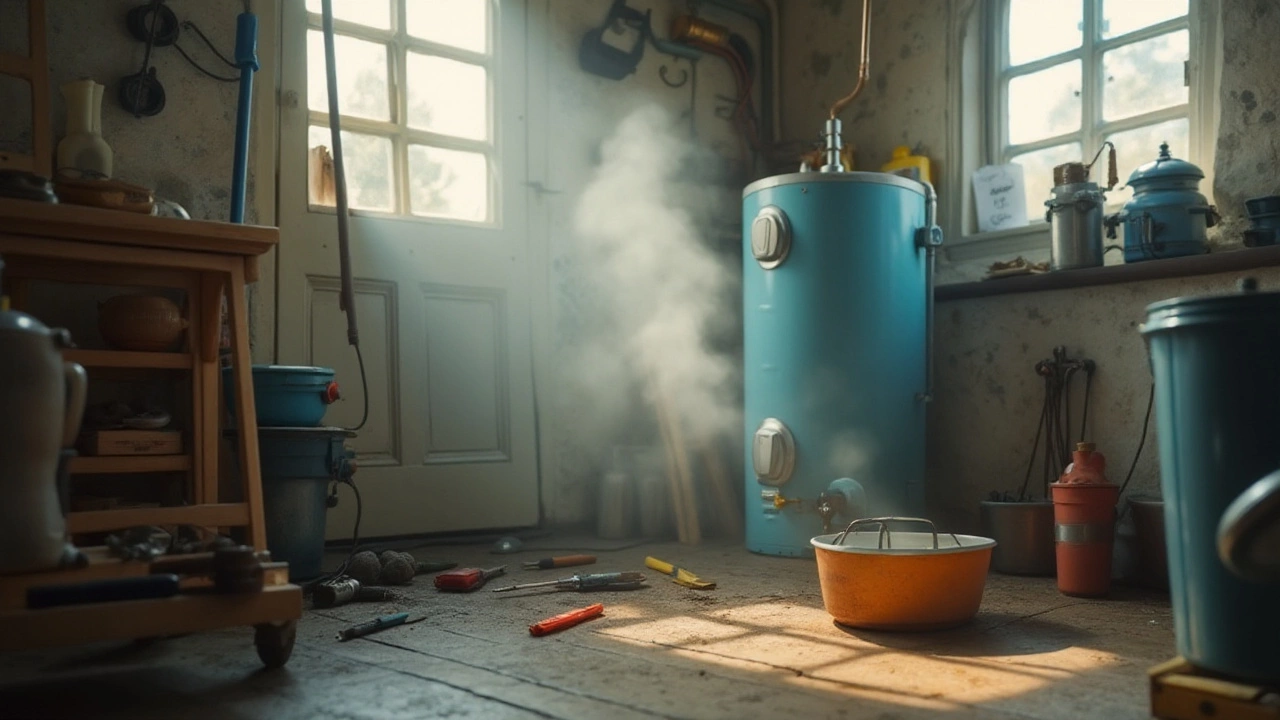
Common Leak Points in Water Heaters
Water heater leaks can be sneaky, often hiding until they've caused noticeable damage. Knowing where to look is half the battle. One of the most frequent places you'll find leaks is around the drain valve. The drain valve, located near the bottom of the tank, can become loose or suffer from wear over time. This can lead to slow leaks that might go undetected until you notice a small pool of water beneath the unit. Tightening the valve often solves the issue, but a damaged valve might require replacement.
Another notorious spot for leaks is the pressure relief valve. This valve is critical for your safety, as it releases water and steam if the tank's pressure becomes too high. However, if the valve is faulty or damaged, it might leak consistently. It's advisable to check this valve periodically, ensuring it's neither blocked nor leaking. Should you ever notice persistent moisture or puddles around this valve, it could signify a malfunction, necessitating immediate attention to prevent pressure build-up, which could be dangerous.
The inlet and outlet connections for hot and cold water have also been known to be sources of leaks. Continuous heating and cooling cycles put stress on these connections, and over time, they may become loose or damaged. Regular inspections can help you spot issues early. Ensuring that these connections are adequately tightened can often fix minor leaks. If persistent, these may need more invasive solutions, like re-sealing or even replacing the affected parts.
Let's not forget about the tank itself. Corrosion is a common problem, especially in older tanks. As the anode rod inside the heater deteriorates, it no longer prevents the tank from rusting. This rust can lead to small perforations in the tank surface, allowing water to escape. These leaks are perhaps the most serious as they might mean it's time for a new hot water tank altogether.
According to plumbing specialist Emily Brooks, “It’s vital to replace your anode rod every few years to prolong the life of your water heater and protect against internal rust.”Maintaining a proactive approach could save you from emergency replacements.
It's crucial to monitor these common leak points. Not only will this help in safeguarding your home from water damage, but regular checks will also extend the lifespan of your water heater. If in doubt, don't hesitate to reach out to a professional. Remember, spotting a problem early on can save you a headache down the road, not to mention the costs associated with major repairs or replacements.
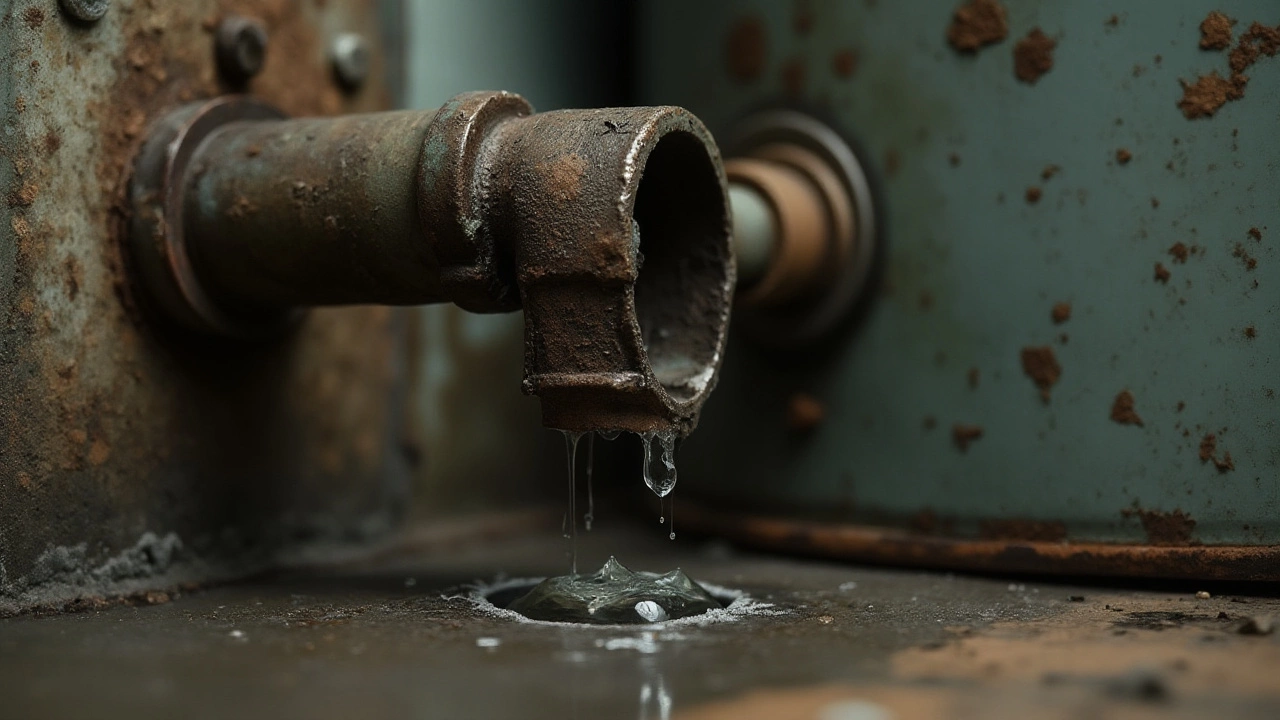
DIY Inspection and Early Detection Tips
Inspecting your water heater regularly can be a straightforward yet vital routine to ensure it operates efficiently. An essential part of home maintenance, these checks aren't just for potential issues but also to extend the life of your water heater. First, familiarize yourself with the heater's anatomy. Knowing your way around the various parts can demystify much of the worry surrounding leaks. Check the temperature and pressure relief valve closely, as it's designed to release water if pressure gets dangerously high, but a malfunction can cause it to leak.
Start by listening. Strange sounds like popping or hissing can indicate sediment buildup in the tank. Visual checks should focus on looking for rust around the tank's seams or pooling water, which are sure signs that action is needed. If you notice any signs of corrosion, it's crucial to address these rapidly to prevent further issues. By routinely examining pipe connections and the top of the tank, you can often catch problems early. If you spot any rusting or mineral-scale, you might need to involve services that specialize in water heater leaks.
Consider the location of the water heater. Basements are notorious for housing these apparatuses, yet they're often out of sight and out of mind. Making a habit of weekly checks is a proactive way to keep them in mind. Additionally, monitor the area around the base of the heater. If it remains wet from persistent leaks, it might damage the surrounding wooden structures or become a place for mold to thrive. Ensure that the area provides adequate clearance, allowing you to spot leaks swiftly and minimizing any long-term damage.
The U.S. Department of Energy advises that lowering the thermostat on your water heater to 120°F not only helps reduce your overall energy bill but could also lower the risk of overheating which sometimes leads to leaks. "Setting your water heater temperature can achieve energy efficiency while preserving the lifespan of your investment," their guidelines suggest.
When considering do-it-yourself remedies, a checklist can be incredibly useful. Include items such as a flashlight, which allows for a better view of internal components, and gloves, especially when dealing with rusty surfaces. If sediment build-up seems to be an issue, periodic draining and flushing of the tank can mitigate potential rust and corrosion, a task most find doable with minimal tools. Don’t hesitate to document each inspection, noting the date and any observations. Having a record can not only help you notice patterns but also be invaluable should you need to bring in a professional.
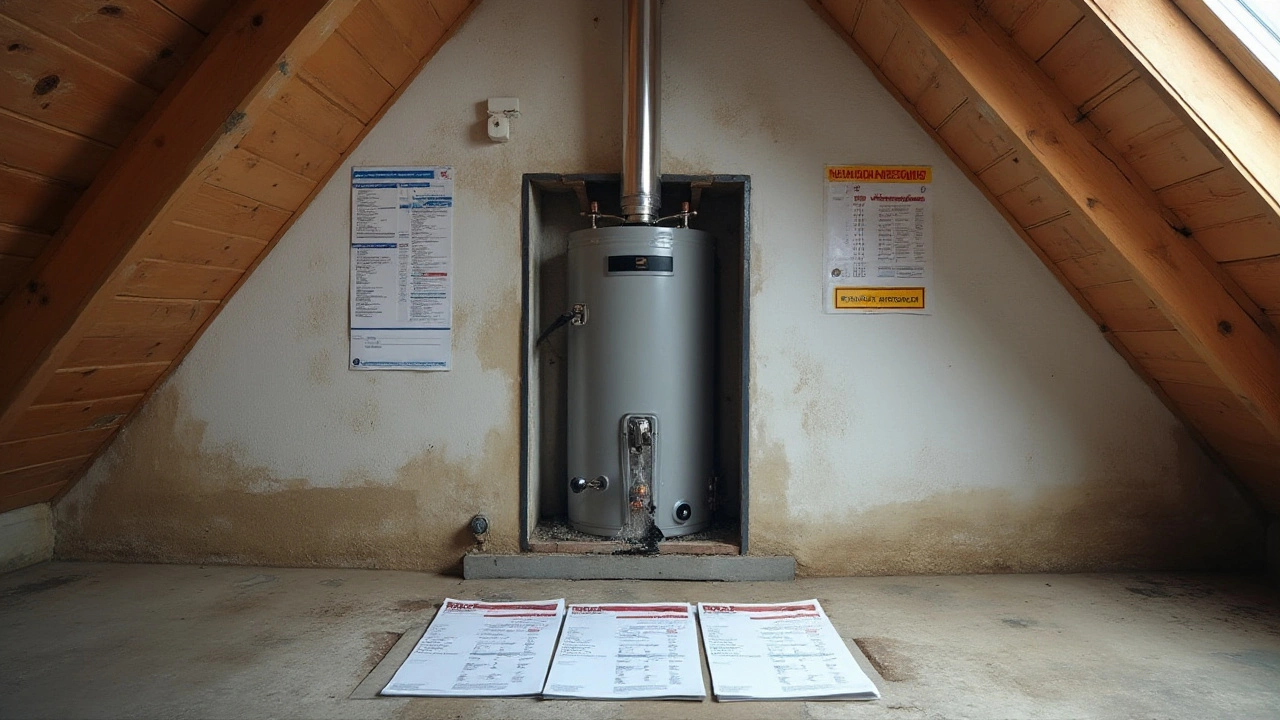
When to Call a Professional Plumber
There comes a time in every homeowner's journey when the idea of fixing something by yourself just doesn't cut it, and that's particularly true with plumbing issues like water heater leaks. While minor leaks can often be managed with a bit of DIY spirit, there are certain situations where the expertise of a professional plumber is indispensable. Consider the complexity of your water heater leaks; if water is gushing rather than trickling, or if you notice any electrical issues alongside your leakage, these are scenarios no amateur should attempt. Understanding these thresholds can save both your sanity and your wallet in the long run.
First, let's talk about safety concerns. Any leak that involves electrical components needs the prompt attention of a professional. Water and electricity are a notoriously bad combination, and the risks include both short circuits and potential fires. If you suspect that moisture has seeped into the electrical elements of your heater, disconnect the power and reach out to a plumber immediately. Don't try to DIY it out of curiosity or frugality because the possible consequences far exceed any perceived savings.
Another pivotal moment to call a plumber is when you see any corrosion around the tank or the joints. Corrosion indicates that the material has been weakened, which can eventually lead to a catastrophic burst if not handled promptly. A professional can assess the extent of the damage and recommend whether you need repairs or a complete replacement. Corrosion is not just a sign of wear and tear but also a critical warning that your system might be due for an upgrade.
"A stitch in time saves nine,” says renowned plumbing expert, Tom Mankowski. “When it comes to water heaters, early professional intervention can prevent bigger disasters down the line."
If you’ve tried minor fixes and the leak persists or amplifies, that’s another clear signal to call in the experts. Persistent leaks can cause major damage, and they tend to escalate quickly, compromising the structure of your home. Keep an eye on your water bill; a sudden spike might indicate a hidden, persistent leak that’s inflating your costs without you realizing it. A professional plumber will have the tools to diagnose and fix the problem efficiently, often spotting issues that are invisible to the untrained eye.
Assessing the longevity and efficiency of your water heater is another crucial way professionals can assist. Generally, water heaters have a lifespan of about 10 to 15 years. If yours falls within this age bracket or shows signs of wear like rust or erratic performance, it might be time to consult with a professional about a replacement. They can advise on energy-efficient models that could save you considerable sums in the future while reducing potential risks associated with old and inefficient units.
Let's not forget, handling appliance warranties. Many water heaters come with warranties that might become void if unauthorized repairs are attempted. A certified professional not only conducts repairs but also ensures that your warranty remains intact. This is particularly vital for new models or when the installation has specific stipulations from the manufacturer. Always check the fine print and save yourself the trouble of voided warranties by relying on certified expertise when necessary.
